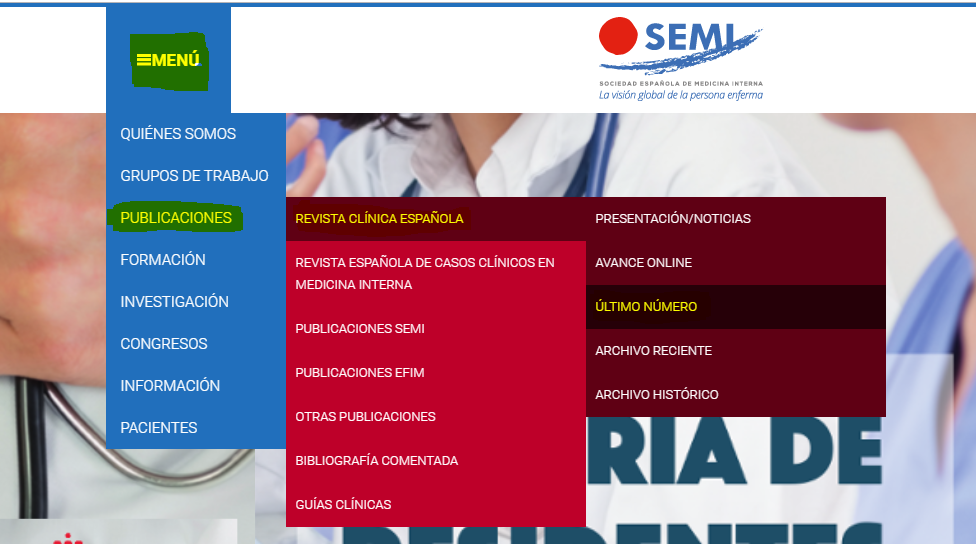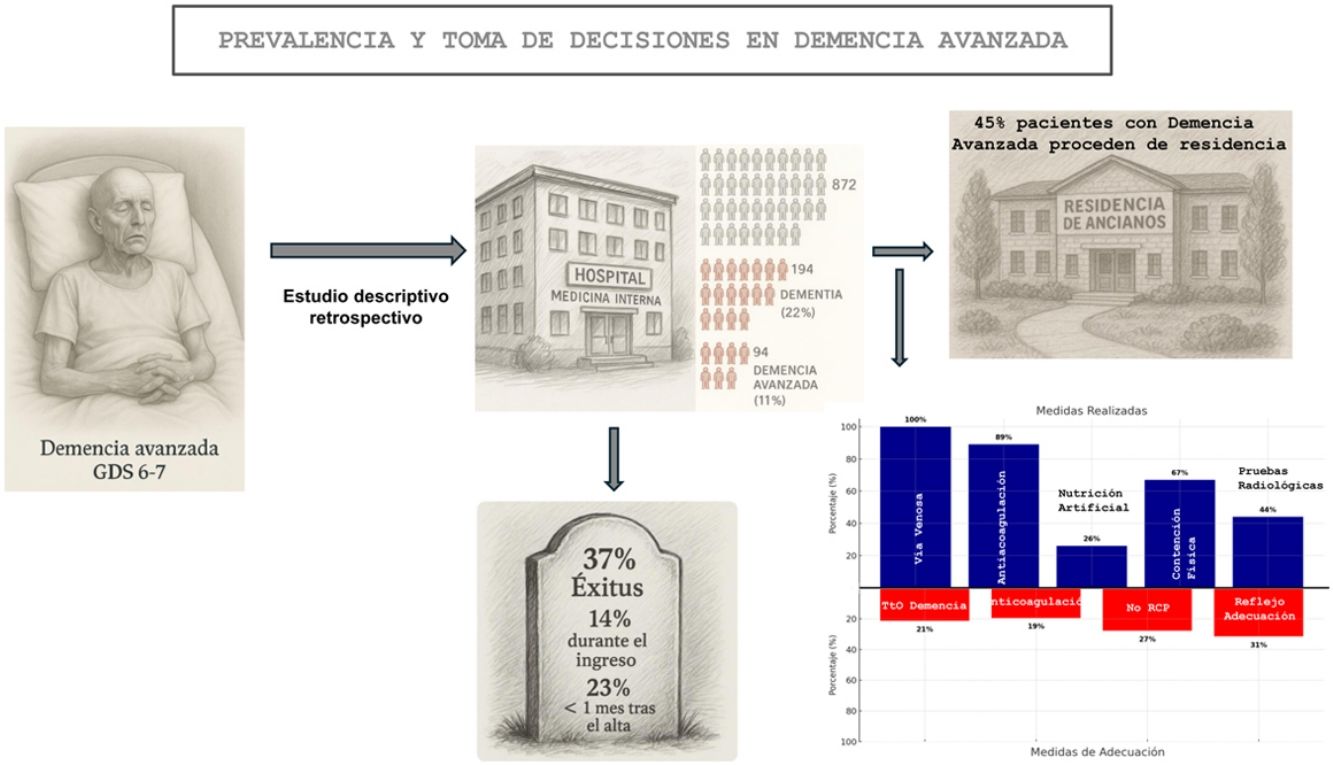Dementia is a chronic neurodegenerative disease with a high prevalence and economic cost. Our objective was to evaluate the prevalence of advanced dementia (AD) in patients hospitalized in the Internal Medicine service; to analyze the therapeutic and diagnostic measures implemented, the degree of adequacy of the therapeutic effort and the information of the family.
MethodologyDescriptive study that included a retrospective analysis of medical records and a telephone interview with family. Patients with GDS 6-7 dementia admitted to Internal Medicine were included, for 3 weeks in 3 different months.
Results194 (22%) patients with dementia were included. The prevalence of admissions with AD was 11%. The median age was 87.5 years (QR 81.75–93), 65% women. 45% came from residence for the elderly. The most frequent etiology was Alzheimer's (48%). The most frequent cause of admission was infection (72%). 37% died. Regarding the measures implemented: 100% were treatment intravenous; 89% received anticoagulation; 26% received artificial nutrition; 81% received pharmacological restraint and 63% physical restraint; and 48% underwent invasive diagnostic tests. Regarding adequacy: lipid-lowering treatment was withdrawn in 19%, antidementia drugs in 23%, anticoagulation in 21%; cardiopulmonary resuscitation was not performed in 30%, adequacy of care in 34%, and 13% were assessed by Palliative Care. A telephone interview was conducted with 55 patients. 42% were not aware of any complications. Care planning was carried out in 2 patients.
ConclusionsThe prevalence of admission to AD is high, and almost half of the patients come from residence for the elderly. Associated mortality is high and therapeutic adequacy and planning are very scarce.
La demencia es una enfermedad neurodegenerativa de curso crónico, con una alta prevalencia y gasto económico. Nuestro objetivo fue evaluar la prevalencia de demencia avanzada (DA) en pacientes hospitalizados en el servicio de Medicina Interna; analizar las medidas terapéuticas y diagnósticas implementadas, el grado de adecuación del esfuerzo terapéutico y la información de los familiares.
MetodologíaEstudio descriptivo que incluyó un análisis retrospectivo de historias clínicas y una entrevista telefónica con familiares. Se incluyeron pacientes con demencia GDS seis a siete, ingresados en Medicina Interna durante tres semanas en tres meses distintos.
ResultadosSe incluyeron 194 (22%) pacientes con demencia. La prevalencia de ingresos con DA fue 11%. La mediana de edad fue 87,5 años (QR 81,75-93), 65% mujeres. El 45% procedían de residencia. La etiología más frecuente fue Alzheimer (48%). La causa de ingreso más frecuente fue infección (72%). Fallecieron 37%. Respecto a las medidas implementadas: se canalizó vía venosa al 100%; 89% recibieron anticoagulación; 26% nutrición artificial; en 81% se realizó contención farmacológica y 63% física; y en 48% se realizaron pruebas diagnósticas invasivas. Respecto a la adecuación: se retiró tratamiento hipolipemiante en 19%, fármacos antidemencia en 23%, anticoagulación en 21%; se reflejó la no reanimación cardiopulmonar en 30%, adecuación de cuidados en 34%, un 13% fueron valorados por Cuidados Paliativos. Se realizó entrevista telefónica a 55 pacientes. El 42% no conocían ninguna complicación. Se realizó planificación de cuidados en 2 pacientes.
ConclusionesLa prevalencia de ingreso en DA es elevada, y casi la mitad de los pacientes proceden de residencia. La mortalidad asociada es elevada y la adecuación terapéutica y planificación son muy escasas.
Article
Diríjase desde aquí a la web de la >>>FESEMI<<< e inicie sesión mediante el formulario que se encuentra en la barra superior, pulsando sobre el candado.

Una vez autentificado, en la misma web de FESEMI, en el menú superior, elija la opción deseada.

>>>FESEMI<<<












